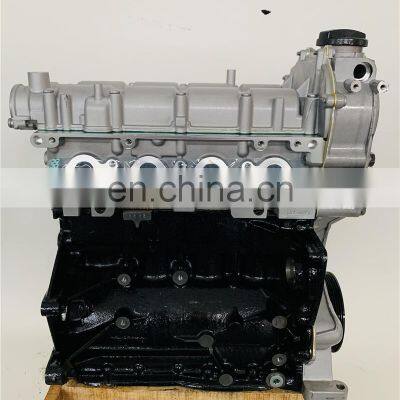Rely on a premium clp engine for heavy-duty use.
Rely on a premium clp engine for heavy-duty use.
Blog Article
How a Clp Engine Can Enhance Effectiveness in Various Industries
The development of CLP engines notes a substantial shift in operational efficiency across different sectors, driven by their capacity to optimize fuel intake and lessen downtime. Industries such as production and logistics stand to acquire significantly from their robust design and constant power result, which promise to simplify procedures and improve productivity. As organizations progressively focus on sustainability alongside efficiency, the role of CLP engines ends up being also much more vital. What remains to be seen is exactly how these improvements will shape the future landscape of commercial procedures and their effect on broader economic trends (clp engine).
Review of CLP Engines
CLP engines, or Continual Liquid Propellant engines, stand for a significant advancement in propulsion innovation, specifically for space applications. These engines use a continual feed system that permits the continual expulsion of propellant, bring about enhanced performance and efficiency contrasted to traditional strong or hybrid propulsion systems. By maintaining a continuous circulation of liquid propellant, CLP engines can achieve more accurate thrust control, which is crucial for maneuvering spacecraft in numerous objective scenarios.
The design of CLP engines integrates advanced products and cutting-edge fuel administration systems. clp engine. This causes lowered weight and increased integrity, necessary factors for long-duration space objectives. Moreover, the constant procedure reduces the danger of combustion instability, a typical obstacle in traditional rocket engines.

Advantages in Production
The manufacturing of Continuous Fluid Propellant (CLP) engines provides several notable advantages that boost both efficiency and cost-effectiveness. One of the primary advantages is the structured production process, which lowers the complexity related to traditional propulsion systems. By using fluid propellant, suppliers can attain higher accuracy in engine efficiency, resulting in optimized power result and lowered waste.
Additionally, CLP engines promote a higher level of modularity, enabling much easier assimilation into various manufacturing lines. This flexibility can considerably lower preparations and boost total functional flexibility. Using CLP modern technology additionally has a tendency to lessen the need for extensive upkeep because of fewer moving parts, which equates into lowered downtime and operational costs.

Applications in Logistics
Leveraging Continuous Liquid Propellant (CLP) engines in logistics supplies considerable benefits in functional effectiveness and reliability. These engines give a robust option for numerous transport requirements, allowing the seamless movement of products across huge ranges. The intrinsic design of CLP engines allows for constant power result, which converts into smoother and a lot more foreseeable transportation routines.
Among the key applications of CLP engines in logistics remains in sturdy freight transport, where they can drive both ground and aerial vehicles. Their capacity to preserve high efficiency under varying tons conditions ensures that distribution timelines are fulfilled, thereby enhancing client satisfaction. Furthermore, CLP engines can be integrated right into automated logistics systems, promoting real-time tracking and optimizing course planning.
Moreover, the durability of CLP engines lowers maintenance downtime, allowing logistics business to optimize their functional capabilities. This is specifically helpful in warehousing operations, helpful site where performance in handling and transporting items is vital. As logistics proceeds to progress, the combination of CLP engines represents a forward-thinking strategy that not only improves performance yet also sustains the industry's growing demands for my review here integrity and rate.
Influence On Energy Efficiency
Just How do Continual Liquid Propellant (CLP) engines boost energy effectiveness in transportation? CLP engines make use of a consistent flow of liquid gas, maximizing burning procedures and preserving a stable thrust result. This design minimizes energy losses related to conventional burning engines, where gas delivery can differ and bring about inadequacies.
The continual operation of CLP engines permits a much more reliable thermal cycle, causing higher details impulse contrasted to conventional engines. clp engine. This converts to decreased gas intake for the exact same amount of work done, substantially reducing operational prices throughout various transport fields, including aeronautics and maritime industries
Moreover, the capacity of CLP engines to keep optimal performance under varying lots conditions minimizes the requirement for constant velocity and slowdown, even more enhancing fuel performance. Boosted energy effectiveness not only adds to set you back financial savings yet also brings about lower greenhouse gas discharges, straightening with international sustainability goals.
Future Trends and Innovations
Arising learn the facts here now innovations in Continuous Liquid Propellant (CLP) engine innovation pledge to change the landscape of transport effectiveness and sustainability. As sectors pivot toward greener alternatives, CLP engines stand at the forefront, integrating ingenious products and style methods that boost performance while decreasing ecological effect.
Among one of the most encouraging patterns is the adoption of crossbreed systems that incorporate CLP engines with renewable power resources. This synergy can enhance fuel consumption and reduce exhausts, aligning with worldwide sustainability objectives. Moreover, improvements in computational fluid characteristics (CFD) are facilitating the layout of more aerodynamically reliable engines, leading to lowered drag and improved fuel performance.
Moreover, the growth of smart tracking systems is established to boost operational performances. These systems leverage data analytics and IoT technology to enhance engine performance in real-time, guaranteeing that the engines run within their most reliable criteria.
As research proceeds to check out different propellant formulations-- such as biofuels and artificial gas-- the future of CLP engines looks appealing. By using these technologies, sectors can not only boost their performance yet additionally add considerably to a cleaner, a lot more sustainable future in transportation.
Final Thought
In final thought, CLP engines stand for a considerable improvement in performance throughout several markets. The combination of sophisticated materials and fewer moving parts decreases maintenance demands, while alignment with sustainability goals placements CLP engines as an essential innovation for the future.
Report this page